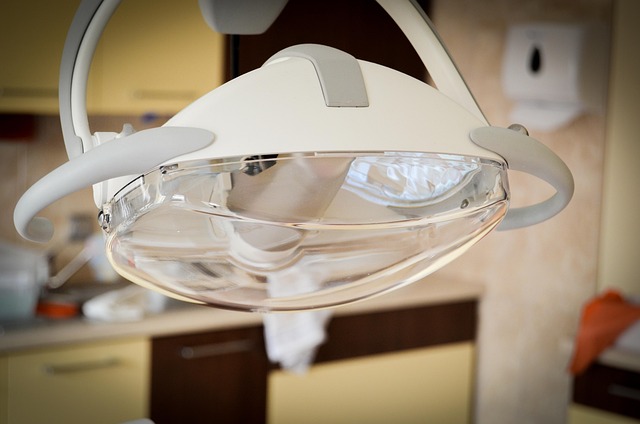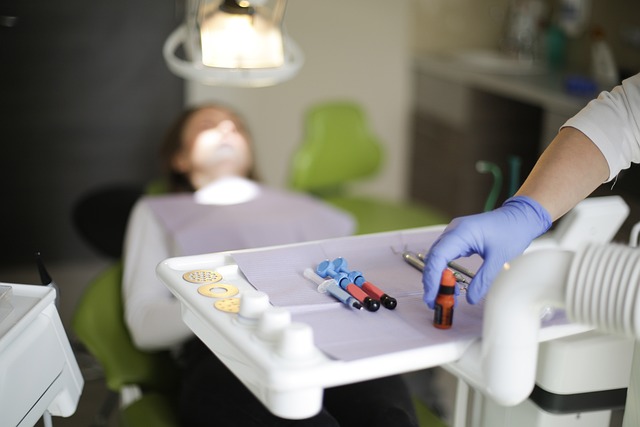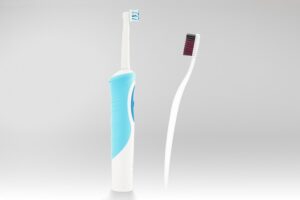Dental malpractice coverage is crucial for protecting dentists from financial losses and legal repercussions due to treatment errors or omissions. Professional liability insurance (malpractice insurance) compensates dental professionals for legal fees, damages, and defense costs, shielding them from claims and lawsuits. Key components include bodily injury, property damage, and defense fees. Premiums are influenced by experience, specialization, location, and practice size. Effective risk management involves meticulous record-keeping, continuous staff education, patient safety procedures, and open communication to mitigate malpractice claims and protect professional liability.
In the fast-paced world of dentistry, ensuring adequate malpractice coverage is non-negotiable. This comprehensive guide delves into the intricacies of professional liability insurance tailored specifically for dentists. From understanding common dental risks and potential claims to navigating legal implications and defense strategies, we explore key coverage elements crucial for every dental practice. Learn how assessing risk factors can influence premium rates and discover best practices for effective risk management in today’s dental landscape.
- Understanding Dental Malpractice: Common Risks and Potential Claims
- The Role of Professional Liability Insurance in Dental Practice
- Key Coverage Elements for Dentists: What You Need to Know
- Assessing Risk: Factors Influencing Dental Malpractice Premiums
- Navigating Claims: Legal Implications and Defense Strategies
- Best Practices for Risk Management in Dental Offices
Understanding Dental Malpractice: Common Risks and Potential Claims

Dental malpractice coverage is a crucial aspect of risk management for dentists, as it protects them from potential claims arising from treatment errors or omissions. Understanding the common risks is essential for any dental professional to make informed decisions regarding their liability protection. One of the primary concerns is failure to diagnose or properly treat oral health issues, which can lead to patient harm and subsequent legal action. For instance, missing a tooth decay that progresses to require extensive restorative work or causing damage during a procedure are scenarios that might result in malpractice claims.
Another frequent risk involves communication and informed consent. Dentists must ensure patients understand the proposed treatment plan, its benefits, risks, and alternatives. Miscommunication or failure to obtain patient agreement can breed dissatisfaction and potential malpractice suits. Moreover, professional liability for dentists extends to areas like inadequate record-keeping, improper use of equipment, or errors in prescribing medications. Staying vigilant, keeping detailed records, and adhering to best practices are key measures to mitigate these risks.
The Role of Professional Liability Insurance in Dental Practice

Professional liability insurance, also known as malpractice insurance, is an indispensable component of running a dental practice. It serves as a shield against potential claims and legal repercussions arising from medical negligence or errors in treatment. Dental professionals face unique risks due to the intricate nature of oral care, making this coverage crucial for financial protection and peace of mind.
This insurance policy compensates dentists for legal fees and damages they may incur if a patient alleges harm caused by their professional services. By having malpractice coverage, dentists can navigate potential lawsuits with greater confidence, ensuring that any issues are resolved promptly and fairly. It is a responsible step to maintain the highest standards of care and protect the reputation of one’s dental practice in this competitive field.
Key Coverage Elements for Dentists: What You Need to Know

When considering malpractice coverage tailored for dentists, understanding key coverage elements is essential. Professional liability insurance, also known as malpractice insurance, shields dentists from financial loss resulting from negligence or medical errors. This critical protection covers claims of patient harm and associated legal costs, offering a safety net against potential financial ruin.
Key coverage elements typically include bodily injury liability, which compensates for any injuries sustained by patients during dental procedures, and property damage liability addressing unforeseen losses to patients’ belongings. Additionally, malpractice policies often encompass expenses related to defense fees and court costs incurred during legal battles, ensuring dentists are shielded throughout the entire process.
Assessing Risk: Factors Influencing Dental Malpractice Premiums

Assessing risk is a critical component in determining premiums for professional liability insurance, also known as malpractice coverage, specifically tailored for dentists. Several factors influence these rates. Firstly, the dentist’s level of experience and specialization plays a significant role. Those with longer tenures and expertise in niche areas might enjoy lower premiums due to a reduced risk profile. Conversely, new practitioners or those in high-risk specialties may face higher rates.
The geographical location of the dental practice is another key consideration. Malpractice claims and settlement costs can vary widely across regions, affecting premium calculations. Urban areas with higher patient volumes and diverse populations might present unique challenges compared to rural settings. Additionally, the size and resources of the dental practice matter; larger practices with advanced equipment and multiple specialists may have different risk profiles necessitating distinct insurance coverage and pricing.
Navigating Claims: Legal Implications and Defense Strategies

Navigating claims against dentists involves understanding the intricate legal landscape surrounding professional liability. When a patient alleges dental malpractice, it’s crucial to recognize that these cases can span various issues, from diagnostic errors and treatment mistakes to informed consent and post-procedure complications. Dentists and their practices must be well-versed in applicable laws and regulations to mount an effective defense.
Strategic defenses for professional liability claims often include demonstrating due care and diligence during every step of patient interaction. This involves maintaining comprehensive records, adhering to accepted standards of dental practice, and ensuring clear communication with patients regarding procedures and potential risks. A robust risk management framework, including regular training on clinical updates and legal best practices, can significantly mitigate the chances of malpractice claims and their associated financial and reputational consequences.
Best Practices for Risk Management in Dental Offices

Implementing robust risk management strategies is paramount for dental practices aiming to mitigate potential malpractice claims and protect their professional liability. A comprehensive approach begins with meticulous patient record-keeping, ensuring all treatments, consultations, and communications are meticulously documented. This includes detailing patient medical histories, allergy information, and any specific instructions or warnings provided during visits. Accurate and up-to-date records serve as a robust defense in the event of disputes, demonstrating due diligence on the part of the dentist.
Additionally, fostering an environment of continuous education and awareness among staff is vital. Regular training sessions on infection control protocols, equipment sterilization, and patient safety procedures ensure that every team member understands their role in minimizing risks. Encouraging open communication channels also facilitates the quick identification and resolution of issues, whether they involve equipment malfunctions or potential adverse reactions to treatments. Such proactive measures not only strengthen risk management but contribute to delivering high-quality, safe dental care.
